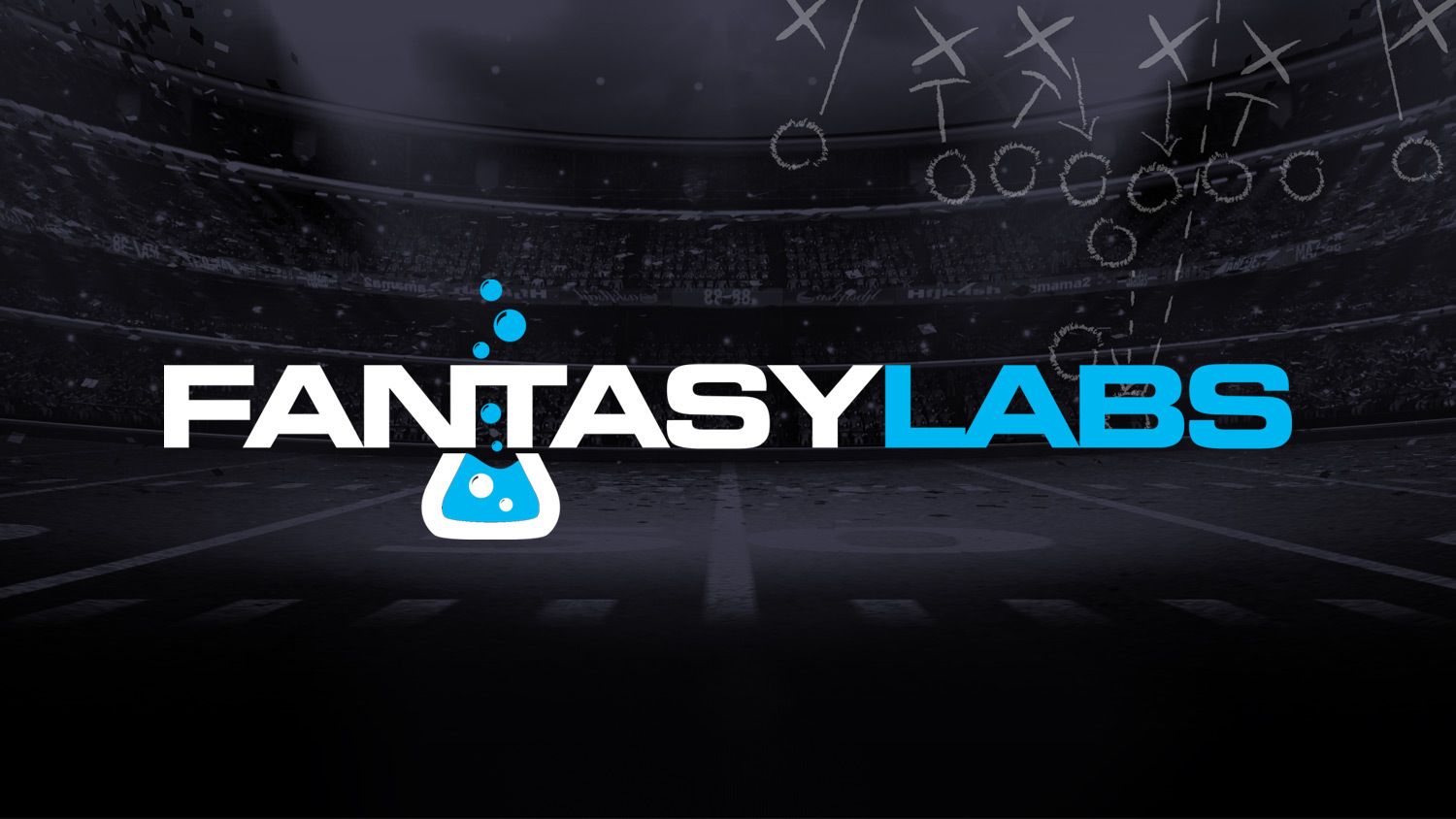As DFS players, we spend most of our time looking forward to the next slate, the next season, etc. Equally important, though, is looking back. Figuring out the thought process that leads to winning lineups is crucial. That’s what makes us better players long term.
Each week in 2022, I’ll look at the winning lineup in DraftKings Millionaire Maker Contest with an eye for how the lucky winner arrived at the lineup that took it down.
While a high degree of positive variance is necessary to win a contest of this size (Week 1’s $5 version had over 1.1 million entrants), there’s still a large amount of skill involved to get to a position to benefit from that variance.
Here’s Week 1’s winner!
The Lineup

“RapidFirexd” won this one handily. The second-place finisher was 6.5 points behind, putting them farther from 1st than they were from 21st. So how did they do it?
The Stack
The most notable component of the lineup is the single stack of Patrick Mahomes and Travis Kelce. With Tyreek Hill’s departure, Kelce moved into the unquestioned top spot in the Cheifs’ passing game. What’s even better is that he’s a tight end, a position where finding big scores is even harder.
Kelce was fairly popular in DFS Week 1, but Mahomes was not. With Mahomes checking in at under 10% ownership, getting exposure to him was a good thing in Week 1. The field probably overreacted to the loss of Hill. Mahomes is the best real-life quarterback in the league and still has plenty of weaponry around him.
Also notable is that this stack didn’t feature any secondary Chiefs options or members of the Cardinals. Double and game stacks have grown in popularity recently, and for a good reason. When games turn into shootouts, players from both teams usually benefit.
However, these strategies are a bit overblown in massive contests like the Milly Maker, particularly double-stacking receivers on the same team. Every pass/touchdown/etc that Travis Kelce catches is one less for JuJu Smith-Schuster, or anybody else.
In smaller contests, the correlation makes up for that. In giant ones, we need to be near perfect at every position, and it’s hard for one team to create two top scores.
Note that this lineup didn’t include any non-QB from the same team.
Other Correlations
However, this lineup did build in a bit of sneaky correlation elsewhere in the lineup. By playing both Antonio Gibson and Christian Kirk, this lineup was built around a clear game script. If Washington controls this game, Jacksonville would likely pass more while Washington keeps things on the ground.
Opposing WR1s and RB1s have a very solid 0.3 correlation, according to our tool. That’s likely not quite enough to force the issue on a weekly basis, but when the players make sense otherwise, it’s worth noting. Gibson was a strong value here at $5,800, being unexpectedly thrust (back) into the starting role following the shooting of Brian Robinson.
My guess would be that this player wanted Gibson, then looked into adding Jaguars receivers for the correlation. If using the FantasyLabs Lineup Optimizer, this is fairly straightforward. In the “correlations” tab, players can set rules to increase or decrease their exposure to a player or players based on who else is in the lineup.
If you’re a hand builder, keep RB/Opposing pass-catcher stacks in mind. If there’s a running back you want in your lineup, adding a receiver from the other team gives you some positive correlation and likely isn’t a highly-owned combination.
DFS Players tend to stack running backs with their defense, if they stack them at all, which would usually preclude them from also including a member of the opposing offense.
The Chalk
Outside of Kelce — who was mitigated by stacking with a low-owned Mahomes, Rapidfirexd ate a bit of chalk on Michael Pittman Jr. and, to a lesser extent Saquon Barkley. Both were tremendous plays going in, and both lived up to their billings.
The broader point here is that it’s ok to have some highly owned players in your lineup. We want our builds to be unique, but that doesn’t mean going off the board at every spot.
When clear values like Pittman emerge, look to differentiate elsewhere.
The Sleepers
By far, the lowest-owned member of this stack was the Steelers Defense. Were they a great play on paper against last year’s AFC champion Bengals? No. Can any of us really predict with a high degree of accuracy who the good defensive plays are? Also no.
I could try to paint the picture post-facto of why I knew the Steelers were a great pick: Divisional game, the Bengals have a poor offensive line, and Pittsburgh’s defensive line is a strength. While those are all true, not many people (probably including Rapidfirexd) were thinking that heading into the week.
What they knew — and we all should — is that the highly variant nature of defensive scoring means we should (almost?) never eat the chalk there. The top three lineups all had the Steelers as their defense — and number four would’ve won the contest if they did.
It’s probably +EV to blindly play the lowest-owned defenses on a weekly basis, but we can do better than that. Try to identify talented defenses — particularly pass rushes — that are likely to go overlooked. That’s where most of the upside is.







